Development looms at the edges of this neighborhood near TCU
An ordinary neighborhood worth preserving
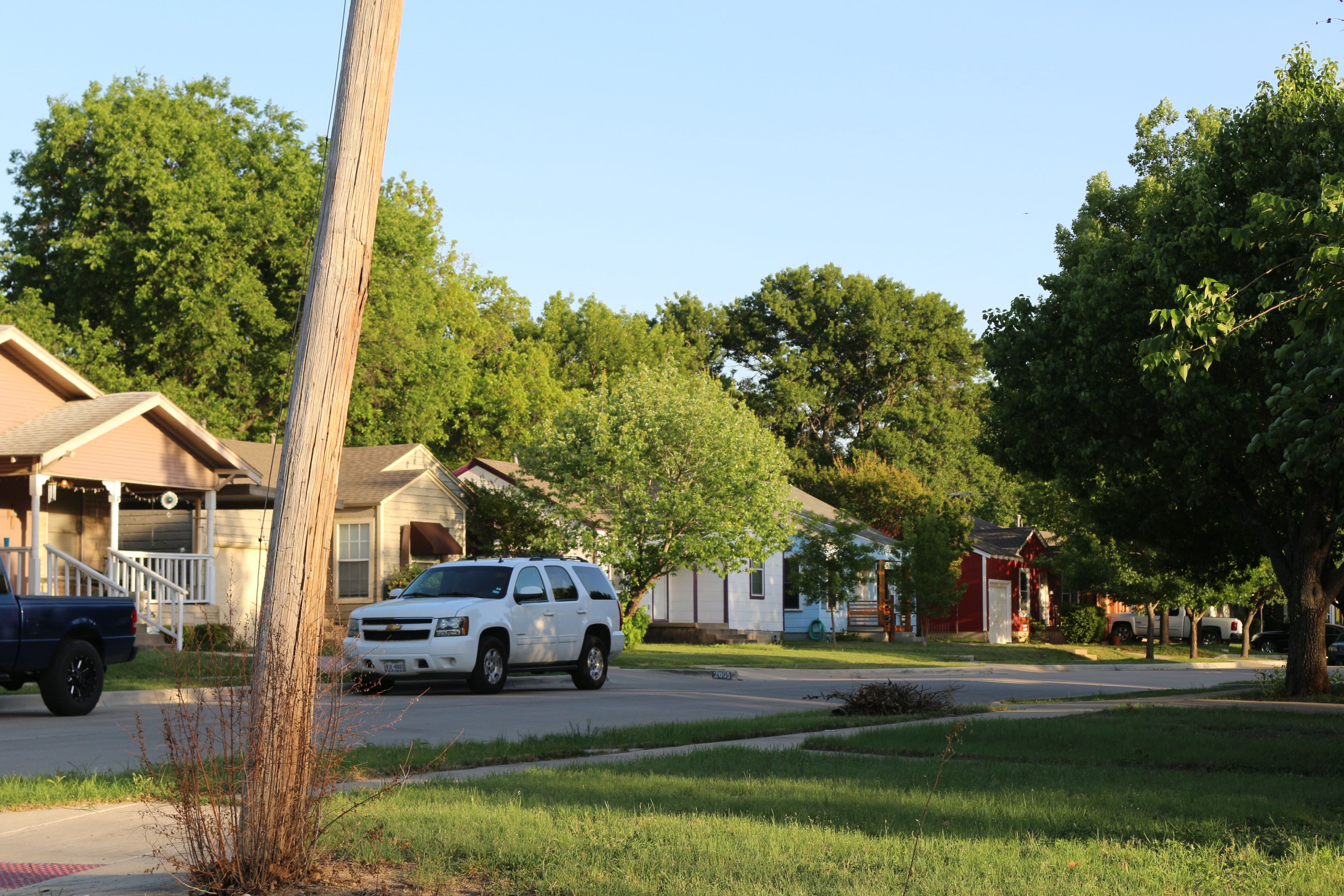
On the urban land nestled between TCU, Park Hill, 8th Avenue and Paschal High School, there is a neighborhood.
It is a pretty ordinary residential plot, with lots of single-story wood frame houses and lusciously overgrown back alleyways.
As its proximity to the local high school already hints, this is a neighborhood known as Paschal Area in Fort Worth, Texas.
This area was classified as part of the Forest Park Conservation District in a survey conducted in 1983-84 by an architectural planning firm for the the Historic Preservation Council of Tarrant County. The survey analyzed properties in the Southside area of Fort Worth.
Within the named conservation district, which was “nine subdivisions platted between 1890 and 1926,” there were four predominant house styles in the neighborhoods: one-story bungalow or two-story houses typical of the 1915-1925 period and one-story cottages and two-story houses typical of the 1925-1940 period.
And further within the district, in an area the survey labeled as “Frisco Heights” though it extends into what is the modern-day Paschal Area, there were two properties listed. These properties were “Fowler House” c. 1918 (“one of the oldest in the area east of TCU” with rare and unique architectural features) that is now the present-day site of the Paschal High School softball field, and a Bungalow Court c. 1937 – “four identical gabled cottages” that still stand today -unseparated-on Wayside Street.
Today, as the long-gone Fowler House foreshadows, development – made visual by a handful of construction sites – looms on the edges of the neighborhood.
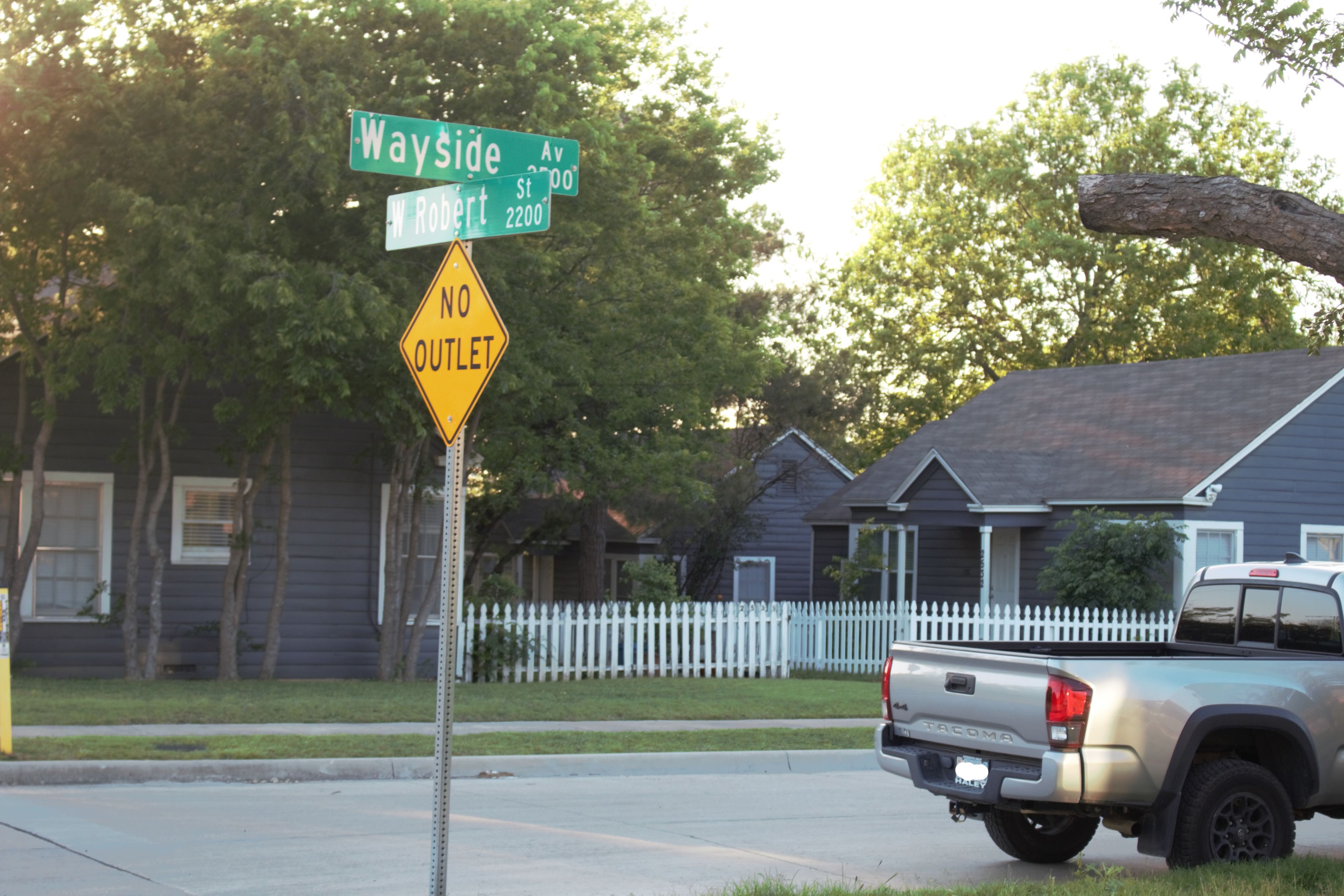
The Bungalow Court today.
The Bungalow Court today.

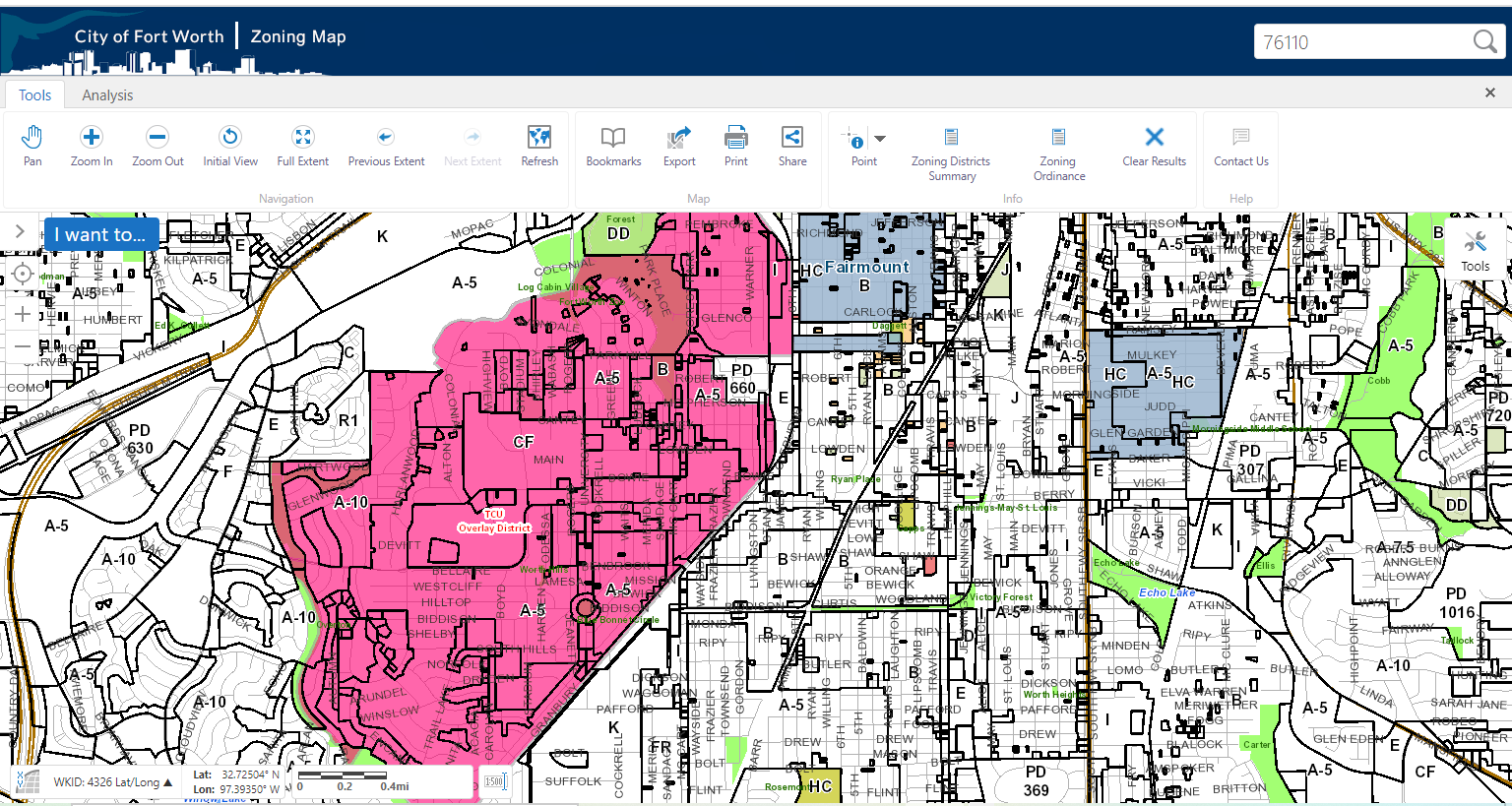
Screenshot of the TCU Overlay as viewed via the City of Fort Worth's online Zoning Map.
Screenshot of the TCU Overlay as viewed via the City of Fort Worth's online Zoning Map.
Location, Location, Location
Paschal Area exists within the TCU Overlay District, which is an area designated by the city of Fort Worth that must adhere to zoning stipulations and limits the number of unrelated tenants in a residence to three.
As stated in the Fort Worth Code Ordinance, “The purpose of the TCU residential overlay district is to facilitate preservation of existing single-family residential neighborhoods by establishing limitations and special requirements on property uses …”
This overlay is meant to moderate the variety and use of plots in the area; it is not driven for the purpose of historical preservation. That would fall under the “Local Historic Districts” local designation – which acts in addition to a zoning overlay and involves guidelines written by a community.
In addition to visual indications of development in the area, the City of Fort Worth’s Zoning Map shows several plots that are marked in the area as “PD” (planned development).
At the furthest edge of Paschal Area, just before 8th Avenue at Stanley Avenue, several townhomes were recently constructed – according to the city’s permit map, two permits were filed for new residential construction in 2019 and 2020 for timeframe.
Another area currently in construction is directly across from Paschal High School on West Lowden Street. A few plots of land are being developed by into multi-story units.
“One of the issues in older neighborhoods is that when the houses on smaller lots are demolished, the new ones replacing them are often out-of-scale. You can see that dynamic all over town,” said Jerre Tracy, executive director of Historic Fort Worth – one example being the “stealth dorms” along Forest Park Boulevard.
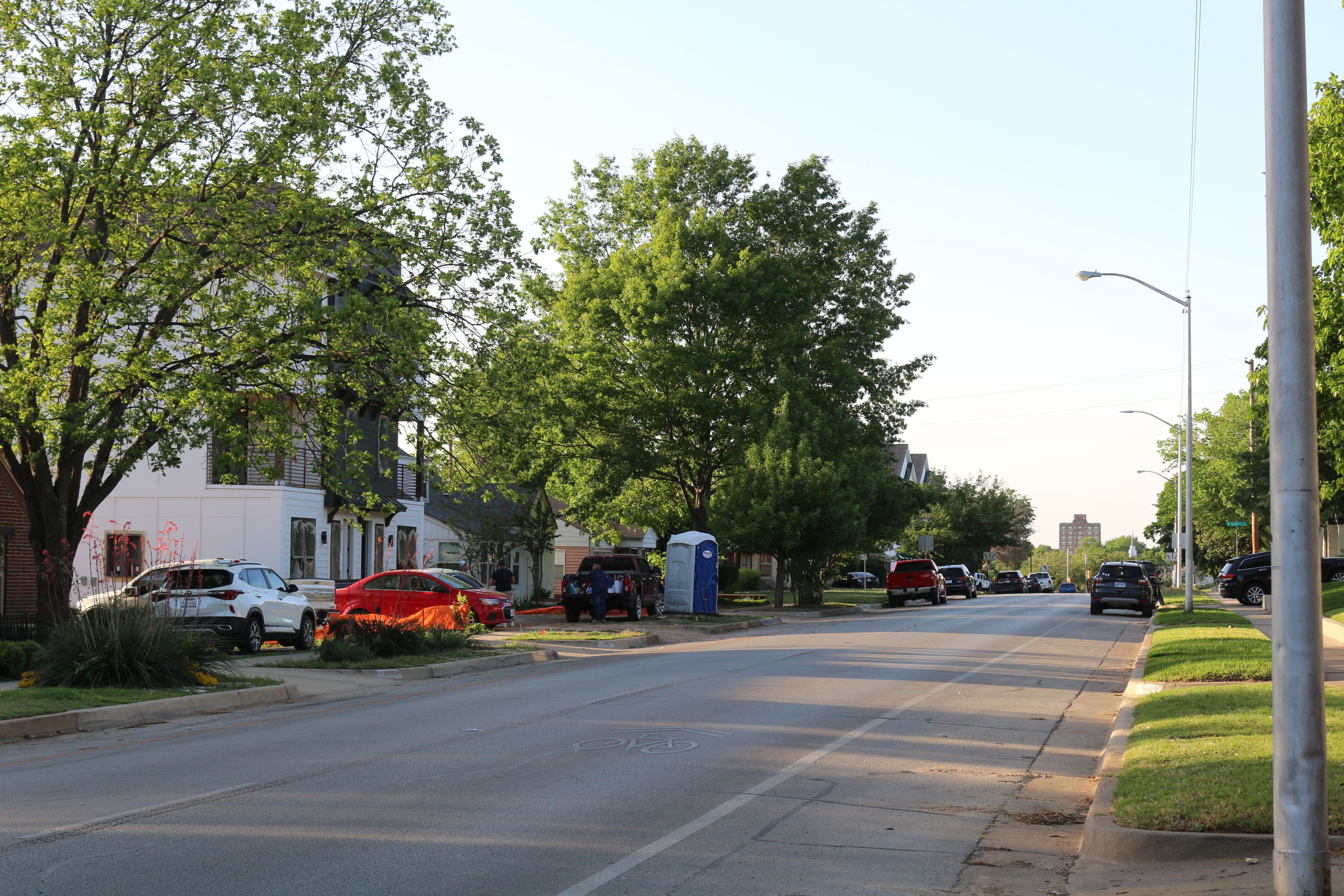
Scene along Forest Park Boulevard, featuring a "Stealth Dorm" partially hidden by foliage.
Scene along Forest Park Boulevard, featuring a "Stealth Dorm" partially hidden by foliage.
Even more subtle changes, like the clean, straight faces of model build homes that sit along Livingston Street do not exactly harmonize with the recessed front porches of the neighbor houses.
It is also notable that part of the Paschal Area, though only a small piece, exists at the westernmost edge of one of the city’s Neighborhood Empowerment Zones, which offer development incentives like an array of fee waivers, specifically NEZ Area 6.
“…municipality determines that the creation of the zone would promote: (1) the creation of affordable housing, including manufactured housing, in the zone; (2) an increase in economic development in the zone; (3) an increase in the quality of social services, education, or public safety provided to residents of the zone; or (4) the rehabilitation of affordable housing in the zone.”
Cathy Taylor, President/Owner and Broker at Helen Painter Real Estate located on Forest Park Boulevard, notes that the development in this area is not surprising due to its location.
“Anything that’s close in is going to be transformed,” she said. “People want to live in the heartbeat of the city, close to downtown, 10 or 15 min from anywhere in the city.”

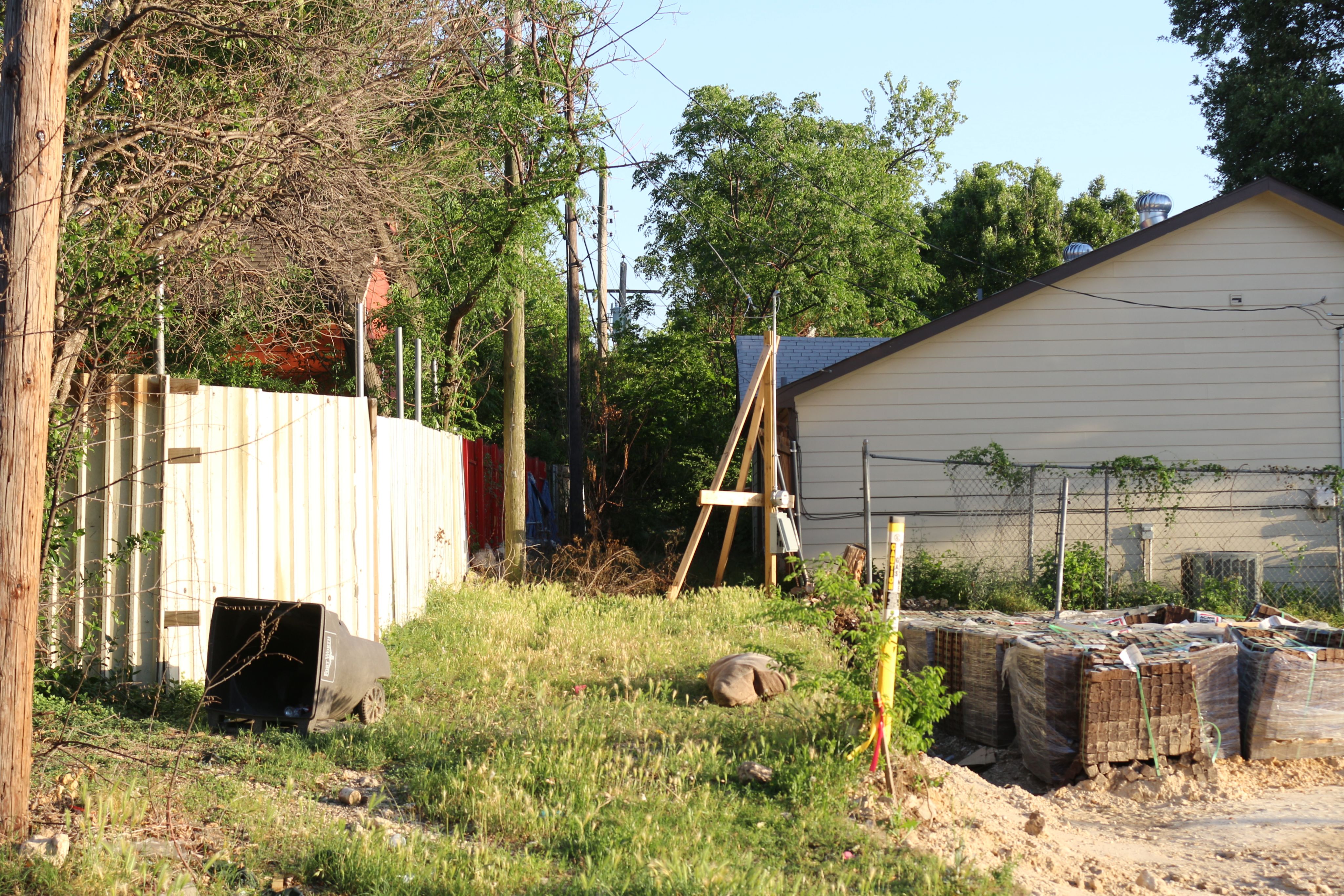
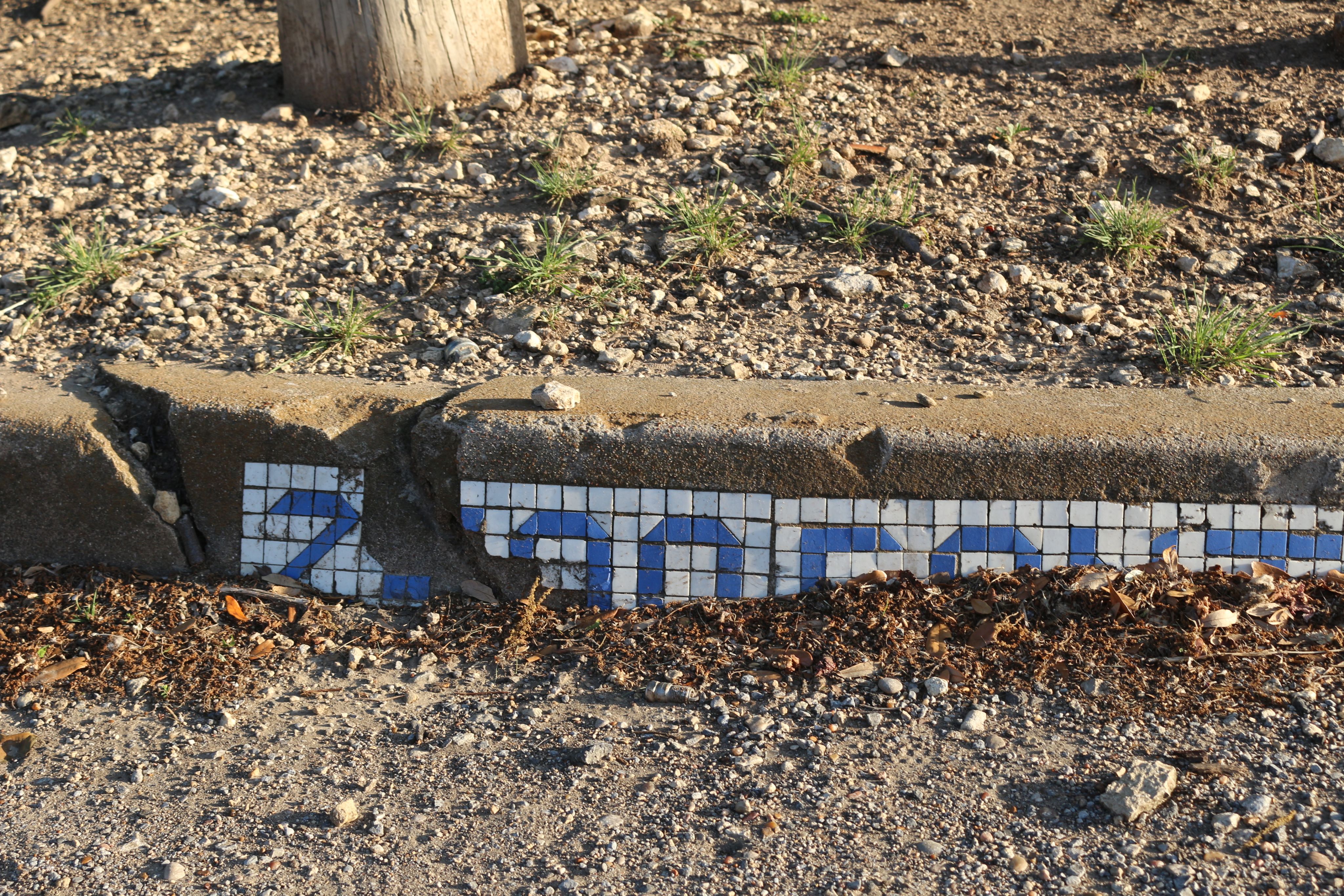
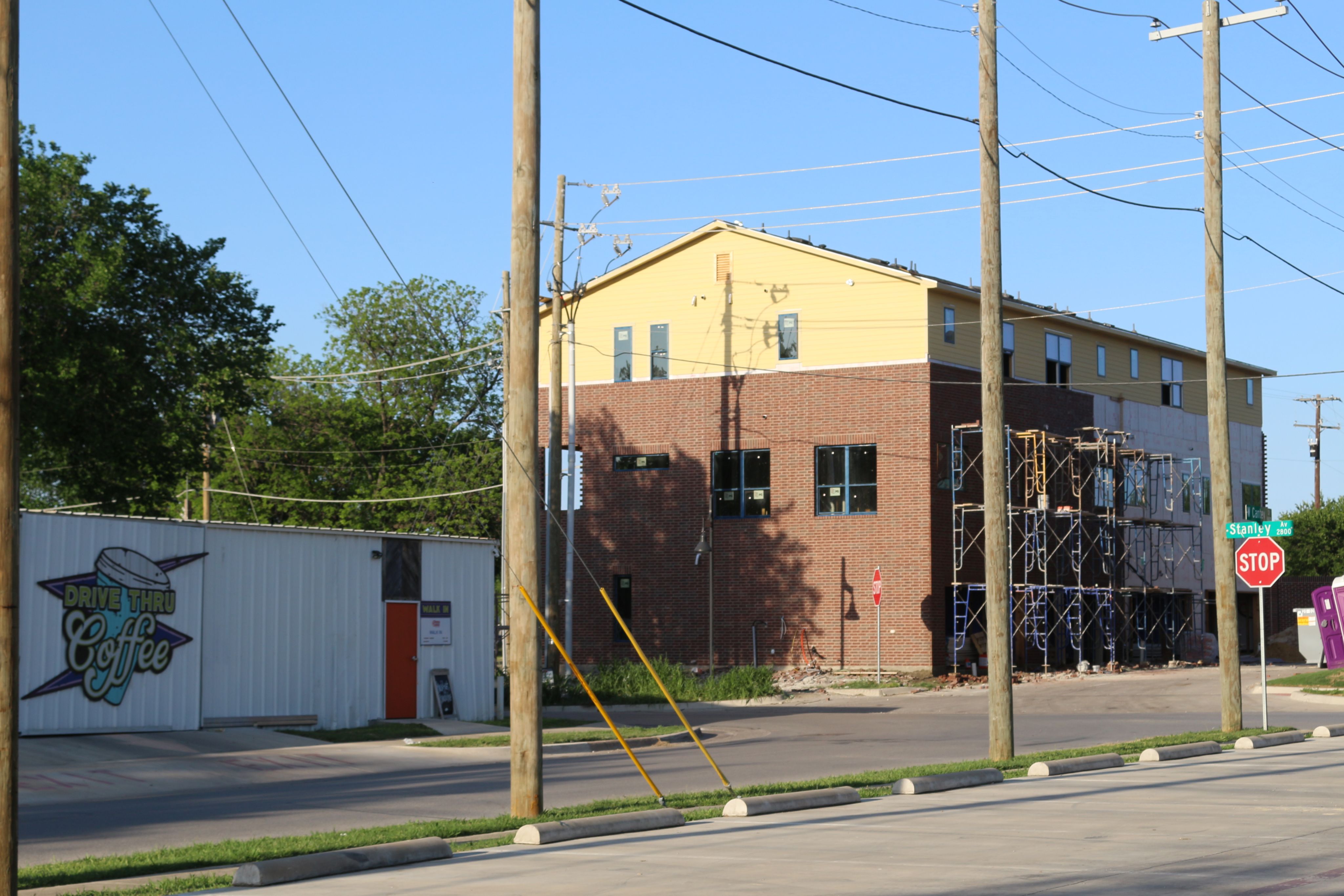
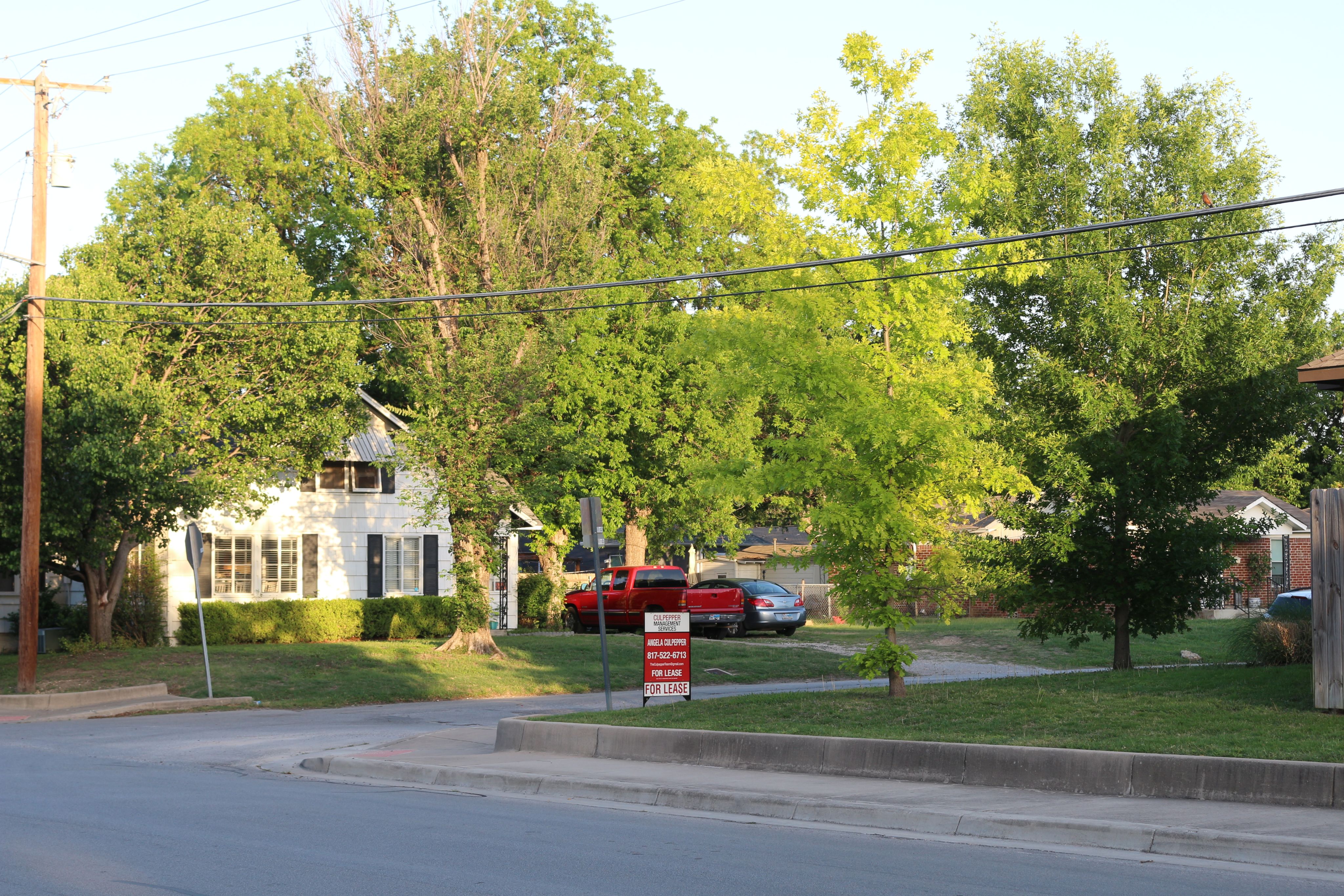

The beginning of a construction site.
The beginning of a construction site.

Another construction site.
Another construction site.

The tiled addresses exist throughout many of the neighborhoods near TCU, though they are not all well kept up.
The tiled addresses exist throughout many of the neighborhoods near TCU, though they are not all well kept up.

More townhomes arise along Stanley Avenue, near Carter's Coffee.
More townhomes arise along Stanley Avenue, near Carter's Coffee.

A beautiful wood siding home in Paschal Area.
A beautiful wood siding home in Paschal Area.
Southside’s density of historic neighborhoods
What makes this neighborhood seem increasingly ordinary to the untrained eye (though sometimes the trained eye, too) is when it is compared to its slightly more dramatic sister neighborhoods. Ryan Place (with its Elizabeth Boulevard – a local historic district and member of the national register), Berkeley Place (historically a “planned professionals” neighborhood with its idyllic but impressive 1910s-20s houses), Mistletoe Heights (another local historic district, “one of Fort Worth’s oldest neighborhoods”) and the Fairmount-Southside Historic District all exist just within a two-mile radius of Paschal Area – areas that tout many residential and commercial historic designations.
In comparison to these acclaimed neighborhoods, Paschal Area could seem plain. But what’s wrong with that? Especially when considering the larger narrative of the development of old neighborhoods – Paschal Area is representative of what happens to the ordinary American neighborhood in the history of historical preservation.
And it’s not completely devoid of historic proximity, anyway.
Other historic features in the neighborhood include decorative tiled curb addresses (which were features in the 1983 survey) and the streets that surround the neighborhood also hosted Fort Worth’s streetcar system in the 1920s, when the TCU line was operational.
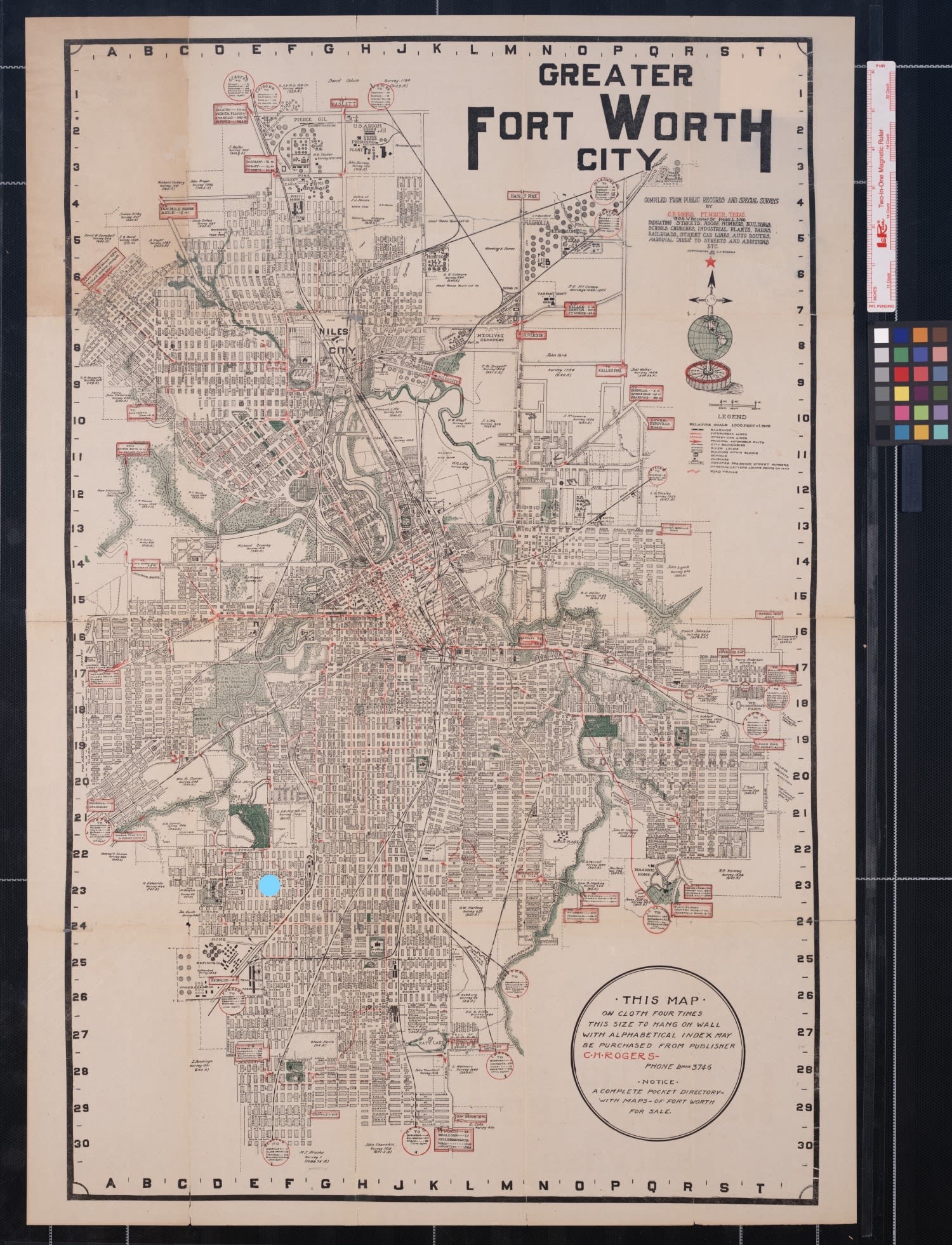
The blue dot indicates near center of Paschal Area neighborhood. The red cross hatched lines indicate the street car paths (see legend). Map via UNT's The Portal to Texas History.
The blue dot indicates near center of Paschal Area neighborhood. The red cross hatched lines indicate the street car paths (see legend). Map via UNT's The Portal to Texas History.
Something to also consider is that the aforementioned “historically historic” neighborhoods were also affluent and catering to Fort Worth’s elite and distinguished from the beginning.
For example, “Many of Fort Worth's most prominent families lived in the landscaped mansions that featured luxurious amenities...” – reads the Ryan Place website. And “A number of business and professional leaders lived in the neighborhoods near Forest Park in the years between the World Wars,” as noted in the Southside Survey.
According to a Zillow map of market value estimates for Berkeley Place, the residential values extend from the $600k up to the $1,000,000 range – at a glance.
According to the same Zillow map, the Ryan Place neighborhood offers a wider range of prices with $200k to $600k houses – at a glance.
The Paschal Area neighborhood has the least amount of range in estimated market value prices, with a steady number of residences that fall in the $200k to $300k range, according to Zillow.
Market value and historic preservation are not mutually exclusive. According to the University of Texas Economic Impact of Historic Preservation report, updated in 2015:
“Overwhelming evidence shows that historic designation has a positive effect on property values. In the majority of circumstances, retaining and enhancing historic character supports and augments the value of residential and commercial property.”
But ultimately in residential neighborhoods, the duty to preserve lies with the homeowner.
“Vibrant, sustainable communities that connect to their heritage don’t happen by accident. They happen because the residents and stakeholders make preservation an integral part of their community development and planning,” notes the Texas Historic Commission on its website.
As a whole, the 76110-zip code area – which incorporates all of the neighborhoods mentioned and more offers these statistics from a Neighborhood Profile created with NTREIS via Helen Painter Real Estate.
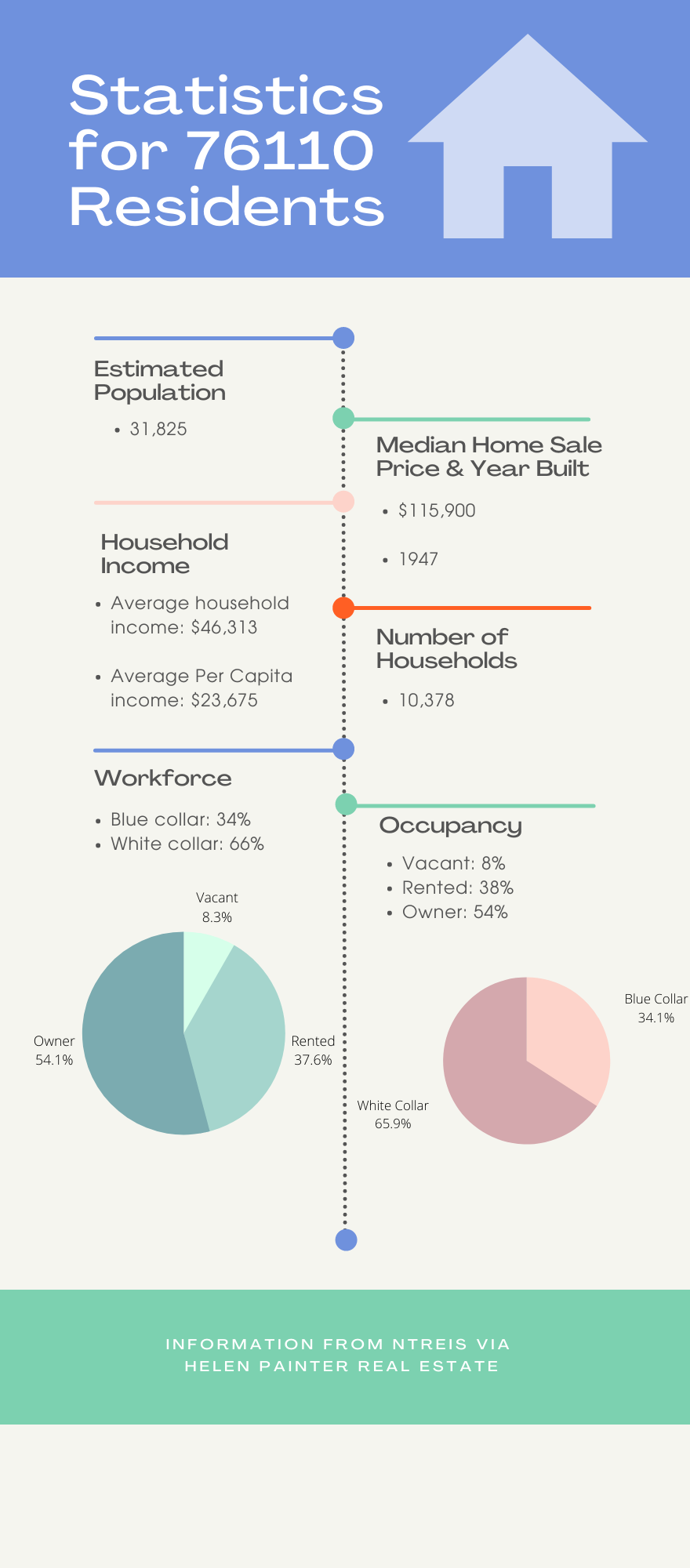
Historical designation
There exist four designations in total at the federal and state level for historic preservation. They are: National Register of Historic Places, National Historic Landmark (“properties with exceptionally high historic significance”), Recorded Texas Historic Landmark and State Antiquities Landmark (these properties “receive the highest level of state legal protection for historic sites in Texas”).
Each designation extends to varying property types and has different criteria and levels of protection.
The Historic Preservation Department under the Fort Worth government recognizes Local Historic Districts and offers workshops. There are also local organizations like Historic Fort Worth, - “dedicated to preserving Fort Worth’s unique historic identity through stewardship, education and leadership - which contributes to an annual list of the city’s “Most Endangered” properties.
Not to mention, the online preservation and architecture enthusiasts that frequent online forums and blogs for the city.
From the perspective of resources (in terms of staffing) for historical preservation made available by the city government, there is not that much when compared to resources in other Texas cities – especially when considering Fort Worth’s inventory of 8,500 historic properties, which is the second highest in the state.
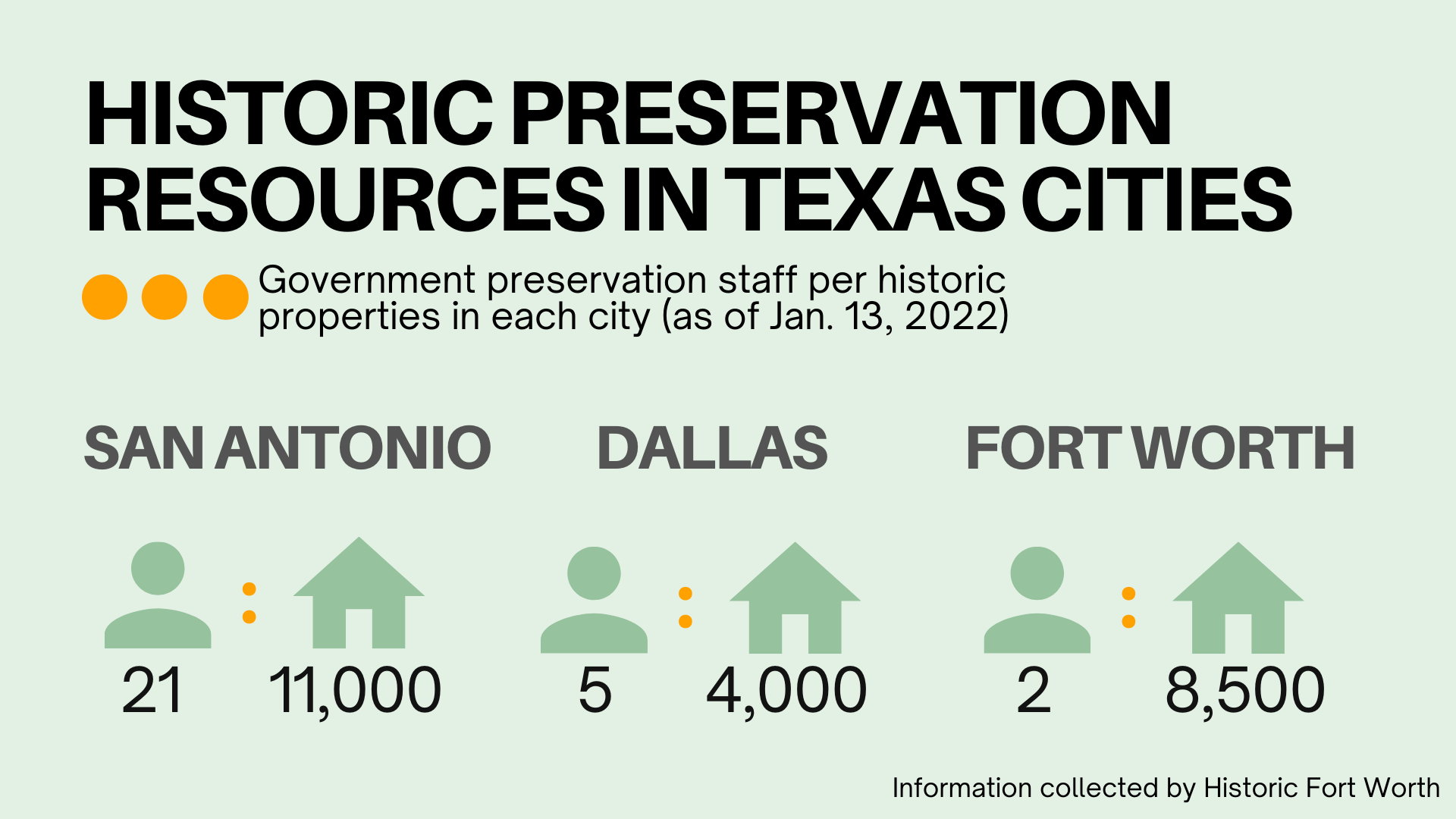
Infographic created with information from Historic Fort Worth.
Infographic created with information from Historic Fort Worth.
“Preservation in almost any American city, it’s not well funded,” said Michael Holleran, an associate professor at the University of Texas’ School of Architecture with a focus in historic preservation.
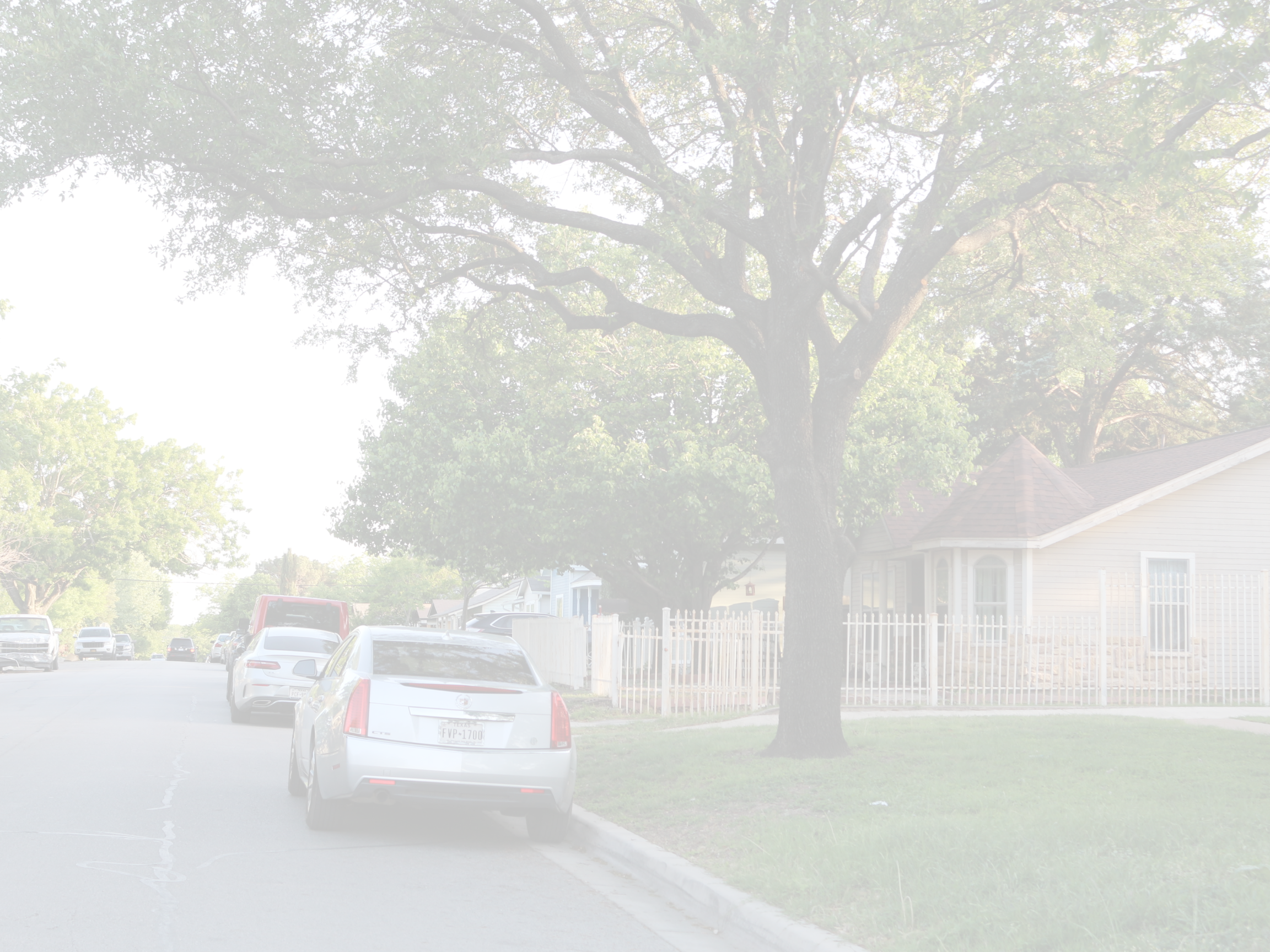
Mentality & discussion
According to Holleran, there are two ways that “preservation” can be interpreted.
“Much of preservation as it is formally organized as you may find it in a city office is regulatory, telling people what they can’t do with their property, and lots of people don’t like that. I don’t like that,” he said. “Historic preservation can also mean ‘I love my house; I want to take good care of it … I’m going to fix this the way it was.’”
Though the TCU overlay that affects the Paschal Area does stipulate changes with zoning, it is not the same as having a historic district designation or overlay – which has the more specific intention of historic preservation.
The survey mentioned at the start of this article is outdated. Holleran discussed the mentality of U.S. preservation when it started to popularize (the ‘80s though the movement began in the ‘60s) in contrast to where it is today.
“Whatever preservationists were saying in the ‘80s was going to be a product of preservation consensus or wherever those particular preservationists were then,” he said. Preservation is indicative of the time period in which it happens. Part of the mentality at this time was that only the great and elaborate estates of the rich should be preserved, he said.
Taylor noted a similar thought: “bigger, grander - that’s typically where historic designation begins ... whereas Frisco Heights are just small little cottages.” “No one has been interested in creating any type of [historic] overlay or historic designation in these areas”
Tracy said, “Personally, I think the Southside is no different from other sectors of our city where people want to live. Demand drives good and bad reinvestment.”
“However, local historic districts like Fairmount and Mistletoe Heights foster predictability by keying off of proven design guidelines for the rehabilitation of their historic properties that are 50 years old or older. Without a local historic district every property owner is at the whim of their next door neighbor who will either build a new, compatible house, or a new, incompatible house, or make a sensitive addition to an existing house, or not.”
Resources – does preservation offer a solution?
Local preservation resources: in addition to DIY historic window workshop videos, the city government offers a Historic Site Tax Exemption for property owners.
“The Tax Exemption freezes the taxable ceiling of the land and improvements at the pre-renovation values for the purpose of assessing City of Fort Worth taxes. The exemption period is ten (10) years.” To be eligible for this, the investment into the site for rehabilitation has to be 20% or greater than the total value of improvements.
State preservation resources: the 2015 Texas Historic Preservation Tax Credit Program through the Texas Historic Commission offers a credit of 25% of the rehabilitation costs for buildings designated in the National Register of Historic Places, Recorded Texas Historic Landmarks, and Texas State Antiquities Landmarks.
However, this credit is only for “income-producing or non-profit” buildings, not for homeowners.
And, as Hollern pointed out, it’s “a shame because [homeowners] are A. a lot of people who care the most B. people who need help, and this doesn’t help them.”)
Federal preservation resources:
There is a slew of preservation resources at the national level, but they are typically less generous, more stringent and “a pain in the neck [to use],” said Holleran, than local or state preservation resources.
There is a 20% income tax credit and a 10% tax credit (though it was repealed December 2017) – both are for non-residential use. There is also as Historic Preservation Easement (which offers permanent protection of a historic property) with potential tax benefits.
Despite the attempts at the local, state and federal level to offer incentives for historic preservation – it seems that ultimately a lot of the financial duty and willpower lies with the homeowner or landlord. This can be slightly disheartening, especially for property owners who do not have the money for the historical preservation rehab option -- oftentimes more expensive and time-consuming.
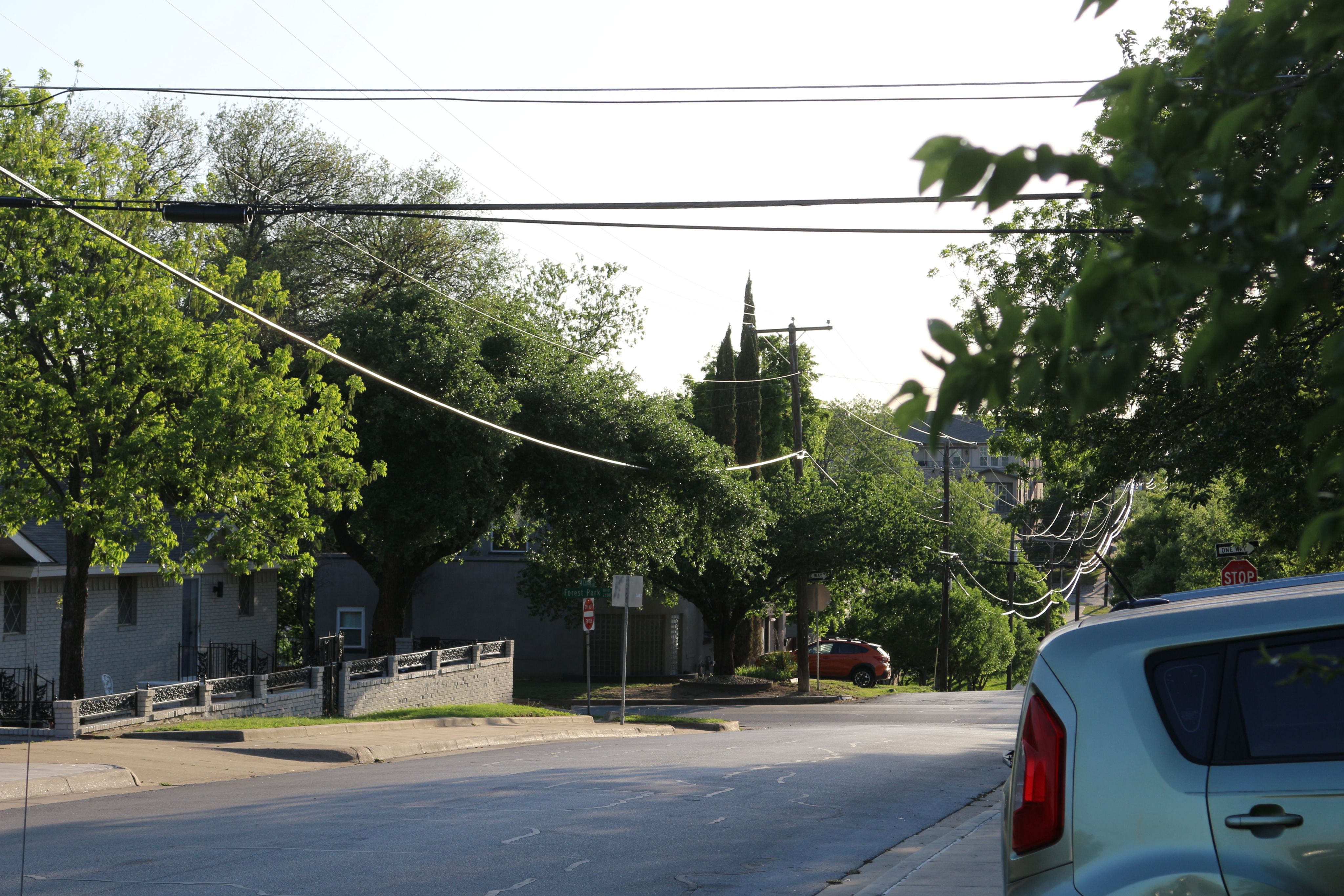
“Part of [the progression of historic preservation] has been learning to think of more ordinary things as historic,” Holleran said.
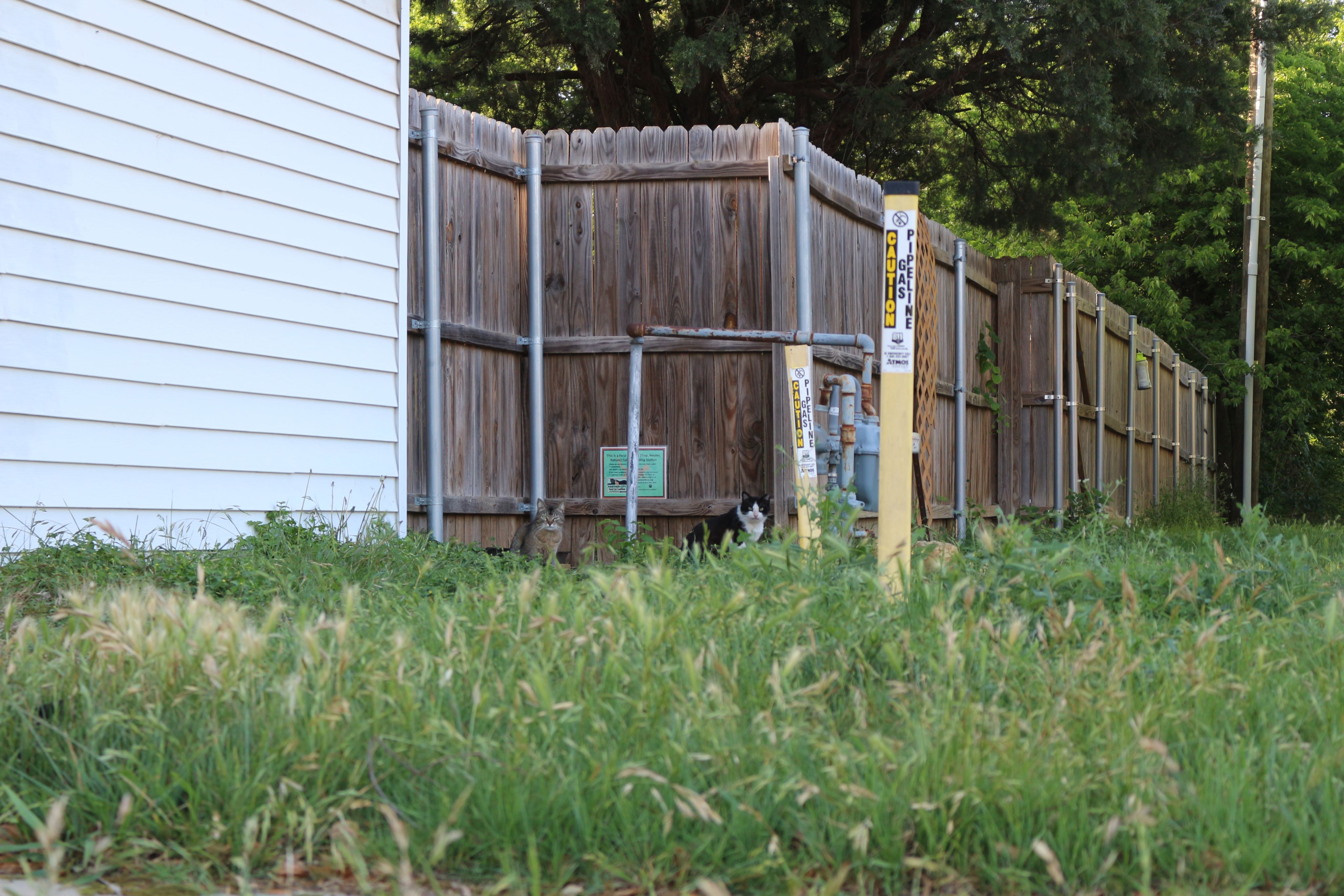
A gang of cats stands guard in one of the neighborhood's many alleyways.
A gang of cats stands guard in one of the neighborhood's many alleyways.
Works Cited:
“About Ryan Place.” Ryan Place, Ryan Place Improvement Association, https://www.ryanplacefortworth.com/about-ryan-place.
“City of Fort Worth Neighborhood Empowerment Zone Program (NEZ).” Welcome to the City of Fort Worth, https://www.fortworthtexas.gov/files/assets/public/neighborhoods/documents/nez-application-intake-checklist.pdf.
Commission, Texas Historical. “Texas Historic Preservation Tax Credit Program.” Texas Historical Commission, https://www.thc.texas.gov/preserve/projects-and-programs/preservation-tax-incentives/texas-historic-preservation-tax-credit.
“Greater Fort Worth City.” The Portal to Texas History, 5 Jan. 2007, https://texashistory.unt.edu/ark:/67531/metapth20809/m1/1/?q=streetcar+fort+worth.
“Historic Preservation.” Welcome to the City of Fort Worth, https://www.fortworthtexas.gov/departments/development-services/preservation-urban-design/historic-preservation.
Tarrant County Historic Resources Survey: Phase III Fort Worth's Southside. Historic Preservation Council for Tarrant County, Texas, 1986.
“Tax Incentives and Technical Preservation Services.” National Parks Service, U.S. Department of the Interior, https://www.nps.gov/tps/tax-incentives.htm.
University of Texas Law. “State and Federal Historic Designations and Markers .” Protecting African American Historic Places in Texas: A Community Legal Toolkit, University of Texas, 2021, https://law.utexas.edu/wp-content/uploads/sites/11/2021/09/2021-ECDC_AfricanAmericanHeritageToolkit_State-Federal-Historic-Designations-Markers.pdf.
2015, ECONOMIC IMPACT OF HISTORIC PRESERVATION IN TEXAS, https://www.thc.texas.gov/public/upload/publications/economic-impact-historic-preservation.pdf. Accessed 2 May 2022.
“§ 4.406 TCU Residential (‘TCU’) Overlay District.” American Legal Publishing Corporation, https://codelibrary.amlegal.com/codes/ftworth/latest/ftworth_tx/0-0-0-43933.
